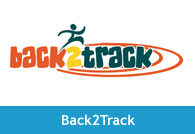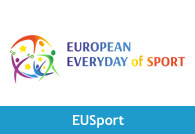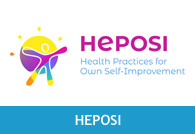NEWS

BSDA is partner in HAPPY BONES project


03.11.2019
Physical activity in women in menopause: a collaborative partnership for active lifestyles for the prevention and treatment of osteoporosis / HAPPY BONES
As indicated in the “EU Physical Activity Guidelines”, the human body, as a consequence of regular physical activity, undergoes morphological and functional changes, which can prevent or delay the appearance of certain illnesses and improve our capacity for physical effort. At present there is sufficient evidence to show that those who live a physically active life can gain a number of health benefits, including and “improved mineralization of bones in young ages, contributing to the prevention of osteoporosis and fractures in older ages”.
Menopause is an age-dependent physiological condition associated with a natural decline in estrogen levels. Women spend a significant part of their lives in postmenopausal state and menopause should not be viewed as a sign of impending decline. Menopause represents a transitory period of physiologic changes, whereby women move from a low to a higher metabolic disease risk profile. Moreover is well demonstrated that women in menopause have an higher risk to be depressed or to suffer other correlated diseases.
In particular, the decline in estrogen level causes a progressive decrease of muscle mass and strength and bone density. Sarcopenia and osteoporosis often coexist in elderly people, with a prevalence of the latter in elderly women. The profound interaction between muscle and bone induces a negative resonance between the two tissues affected by these disorders worsening the quality of life in the postmenopausal period. It has been estimated that at least 1 in 3 women over age 50 will experience osteoporotic fractures, often requiring hospitalization and long-term care, causing a large financial burden to health insurance systems. Hormonal replacement therapy is effective in osteoporosis prevention, but concerns have been raised with regard to its safety. On the whole, the increase in life expectancy for postmenopausal women along with the need to improve their quality of life makes it necessary to develop specific and safe therapeutic strategies, alternative to hormonal replacement therapy, targeting both sarcopenia and osteoporosis progression.
Osteoporosis has been defined on the basis of bone mineral density (BMD) assessment. According to the WHO criteria, osteoporosis is defined as a BMD that lies 2.5 standard deviations or more below the average value for young healthy women (a T-score of <-2.5 SD). This criterion has been widely accepted and provides both a diagnostic and intervention threshold. The most widely validated technique to measure BMD is dual energy X-ray absorptiometry (DXA), and diagnostic criteria based on the T-score for BMD are a recommended entry criterion for the development of pharmaceutical interventions in osteoporosis. Since therapeutic trials in osteoporosis usually require a low BMD value as an entry criterion, drugs are licensed for use in patients below a given BMD threshold. The latest Guidelines confirm that, in addition to therapy with calcium, vitamin D and drugs that slow bone resorption, a structured physical activity is a great tool capable of slowing the reduction of bone density and reducing the risk of falls and then, of fractures. Primary osteoporosis is typically that affecting elderly people and in particular, women at the end of fertile age (peri-menopause, menopause, post-menopause).
General measures of prevention and treatment such as calcium and vitamin D supplementation, the guidance for fall prevention and the practice of specific physical exercises, can be instituted before the manifestation of the disease and may promote other health benefits. Bone tissue is continuously remodeled, and as a dynamic tissue, it adapts and responds to various stimuli, such as physical exercise. During physical activity mechanical forces can be exerted on bones through ground reaction forces and by the contractile activity of muscles, resulting in maintenance or gain of bone mass. Studies have already pointed out many of the mechanical stimuli that are beneficial to bone tissue, including some physical activities as ground exercises.
Immobilisation is an important cause of bone loss. Immobilised patients may lose as much bone in a week when confined to bed than they would otherwise lose in a year. For this reason, immobility should, wherever possible, be avoided (EU).
At a EU level, the need to develop strength exercise for health enhacing and to maintain bone mass in subjects with osteoporosis risks, is firmly asserted in the “European guidance for the diagnosis and management of osteoporosis in postmenopausal women” (ref). Although the amount of weight-bearing exercise that is optimal for skeletal health in patients with osteoporosis is not known, the european guidance states that exercise forms an integral component of osteoporosis management. At all times, increased strength may prevent falls by improving confidence and coordination by stimulating bone formation and by decreasing bone resorption, and by preserving muscle strength.
Considering this, and in order to support the implementation of the Guidelines, HAPPY BONES project wants to promote physical activity for women who aged 50-65 by offering an innovative exercise protocol to involve them in a moderate physical activity and as a consequence, strengthen personal resources and above all, to do a physical activity necessary for their well being. Thus, the project through the development of its exercise protocol aims to promote the importance of health-enhancing physical activity through increased participation in exercise for all. For this reason the training will be proposed in two different contexts: at the workplace (in order to elimate the barriers related to mobility form work to the gym, lack of time and money) and to a Sport Association (avoiding only the economic barrier).
Considering the needs to encourage osteopenic/ osteoporotic patients to practise physical activity and to train health professionals on how to encourage them, the HAPPY BONES project objectives are:
• to develop and promote an innovative osteoporosis exercise protocol for osteopenic/ osteoporotic sedentary women aged 50-65 to involve them in a moderate exercise and as a consequence, to increase their quality of life (in physiological and psychological terms);
• to train teachers and experts in physical education with specific skills in the participating countries in order to standardize the osteoporosis exercise protocol and make it transferable and replicable also in other contexts and countries. The training will be organized using the train the trainers methodology in order to trigger a cascade effect and involve more operators in the sector.
• To compare the drop out and the adherence to the training protocol in the two different environments (workplace and Sport Association) in order to understand wich is the best solution to promote regular physical activity. By adhering to the project, the employer gets involved in the health of its employees and at the same time, adopts measures to reduce the indirect costs generated by the hours of absence caused by the possible risks due to pathology.
For the participating organisations, HAPPY BONES project will aim to:
• Encourage participation in sport and physical activity, especially by supporting the International Osteoporotic Foundation recommendation on health physical activity;
• Promote education in and through exercise;
• Reinforce cooperation with partners from other countries
• Increase quality in the preparation, implementation, monitoring and follow-up of EU/international exercise projects; increased capacities to encourage citizens to participate in exercise and health enhancing physical activity;
• Create a more dynamic, committed and professional environment inside the organisation: ready to integrate good practices and new methods into daily activities; open to synergies with organisations active in different fields or in other socio-economic sectors; promoting the socio-educational development of professionals and volunteers in exercise, in line with European policy objectives in the sport field.
At systemic level, the project will expect to contribute to the development of the European dimension in physical activity for all, in line with the general objective of the Programme in the sport field, mainly through the education of health care professionals and through the cooperation with professionals from AMPA sector. From an individual's perspective, the project will engage osteopenic/osteoporotic patients and will motivate them to perform physical activity changing their lifestyle and to maintain an high adherence to physical activity programs and therefore to increased levels of participation in exercise and physical activity.
Physical activity in women in menopause: a collaborative partnership for active lifestyles for the prevention and treatment of osteoporosis / HAPPY BONES project is co-funded by Erasmus+ Programme of the European Union.
Menopause is an age-dependent physiological condition associated with a natural decline in estrogen levels. Women spend a significant part of their lives in postmenopausal state and menopause should not be viewed as a sign of impending decline. Menopause represents a transitory period of physiologic changes, whereby women move from a low to a higher metabolic disease risk profile. Moreover is well demonstrated that women in menopause have an higher risk to be depressed or to suffer other correlated diseases.
In particular, the decline in estrogen level causes a progressive decrease of muscle mass and strength and bone density. Sarcopenia and osteoporosis often coexist in elderly people, with a prevalence of the latter in elderly women. The profound interaction between muscle and bone induces a negative resonance between the two tissues affected by these disorders worsening the quality of life in the postmenopausal period. It has been estimated that at least 1 in 3 women over age 50 will experience osteoporotic fractures, often requiring hospitalization and long-term care, causing a large financial burden to health insurance systems. Hormonal replacement therapy is effective in osteoporosis prevention, but concerns have been raised with regard to its safety. On the whole, the increase in life expectancy for postmenopausal women along with the need to improve their quality of life makes it necessary to develop specific and safe therapeutic strategies, alternative to hormonal replacement therapy, targeting both sarcopenia and osteoporosis progression.
Osteoporosis has been defined on the basis of bone mineral density (BMD) assessment. According to the WHO criteria, osteoporosis is defined as a BMD that lies 2.5 standard deviations or more below the average value for young healthy women (a T-score of <-2.5 SD). This criterion has been widely accepted and provides both a diagnostic and intervention threshold. The most widely validated technique to measure BMD is dual energy X-ray absorptiometry (DXA), and diagnostic criteria based on the T-score for BMD are a recommended entry criterion for the development of pharmaceutical interventions in osteoporosis. Since therapeutic trials in osteoporosis usually require a low BMD value as an entry criterion, drugs are licensed for use in patients below a given BMD threshold. The latest Guidelines confirm that, in addition to therapy with calcium, vitamin D and drugs that slow bone resorption, a structured physical activity is a great tool capable of slowing the reduction of bone density and reducing the risk of falls and then, of fractures. Primary osteoporosis is typically that affecting elderly people and in particular, women at the end of fertile age (peri-menopause, menopause, post-menopause).
General measures of prevention and treatment such as calcium and vitamin D supplementation, the guidance for fall prevention and the practice of specific physical exercises, can be instituted before the manifestation of the disease and may promote other health benefits. Bone tissue is continuously remodeled, and as a dynamic tissue, it adapts and responds to various stimuli, such as physical exercise. During physical activity mechanical forces can be exerted on bones through ground reaction forces and by the contractile activity of muscles, resulting in maintenance or gain of bone mass. Studies have already pointed out many of the mechanical stimuli that are beneficial to bone tissue, including some physical activities as ground exercises.
Immobilisation is an important cause of bone loss. Immobilised patients may lose as much bone in a week when confined to bed than they would otherwise lose in a year. For this reason, immobility should, wherever possible, be avoided (EU).
At a EU level, the need to develop strength exercise for health enhacing and to maintain bone mass in subjects with osteoporosis risks, is firmly asserted in the “European guidance for the diagnosis and management of osteoporosis in postmenopausal women” (ref). Although the amount of weight-bearing exercise that is optimal for skeletal health in patients with osteoporosis is not known, the european guidance states that exercise forms an integral component of osteoporosis management. At all times, increased strength may prevent falls by improving confidence and coordination by stimulating bone formation and by decreasing bone resorption, and by preserving muscle strength.
Considering this, and in order to support the implementation of the Guidelines, HAPPY BONES project wants to promote physical activity for women who aged 50-65 by offering an innovative exercise protocol to involve them in a moderate physical activity and as a consequence, strengthen personal resources and above all, to do a physical activity necessary for their well being. Thus, the project through the development of its exercise protocol aims to promote the importance of health-enhancing physical activity through increased participation in exercise for all. For this reason the training will be proposed in two different contexts: at the workplace (in order to elimate the barriers related to mobility form work to the gym, lack of time and money) and to a Sport Association (avoiding only the economic barrier).
Considering the needs to encourage osteopenic/ osteoporotic patients to practise physical activity and to train health professionals on how to encourage them, the HAPPY BONES project objectives are:
• to develop and promote an innovative osteoporosis exercise protocol for osteopenic/ osteoporotic sedentary women aged 50-65 to involve them in a moderate exercise and as a consequence, to increase their quality of life (in physiological and psychological terms);
• to train teachers and experts in physical education with specific skills in the participating countries in order to standardize the osteoporosis exercise protocol and make it transferable and replicable also in other contexts and countries. The training will be organized using the train the trainers methodology in order to trigger a cascade effect and involve more operators in the sector.
• To compare the drop out and the adherence to the training protocol in the two different environments (workplace and Sport Association) in order to understand wich is the best solution to promote regular physical activity. By adhering to the project, the employer gets involved in the health of its employees and at the same time, adopts measures to reduce the indirect costs generated by the hours of absence caused by the possible risks due to pathology.
For the participating organisations, HAPPY BONES project will aim to:
• Encourage participation in sport and physical activity, especially by supporting the International Osteoporotic Foundation recommendation on health physical activity;
• Promote education in and through exercise;
• Reinforce cooperation with partners from other countries
• Increase quality in the preparation, implementation, monitoring and follow-up of EU/international exercise projects; increased capacities to encourage citizens to participate in exercise and health enhancing physical activity;
• Create a more dynamic, committed and professional environment inside the organisation: ready to integrate good practices and new methods into daily activities; open to synergies with organisations active in different fields or in other socio-economic sectors; promoting the socio-educational development of professionals and volunteers in exercise, in line with European policy objectives in the sport field.
At systemic level, the project will expect to contribute to the development of the European dimension in physical activity for all, in line with the general objective of the Programme in the sport field, mainly through the education of health care professionals and through the cooperation with professionals from AMPA sector. From an individual's perspective, the project will engage osteopenic/osteoporotic patients and will motivate them to perform physical activity changing their lifestyle and to maintain an high adherence to physical activity programs and therefore to increased levels of participation in exercise and physical activity.
Physical activity in women in menopause: a collaborative partnership for active lifestyles for the prevention and treatment of osteoporosis / HAPPY BONES project is co-funded by Erasmus+ Programme of the European Union.

 Български
Български














































